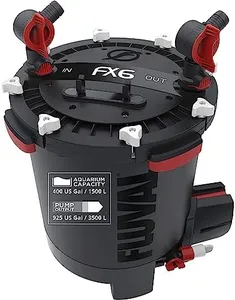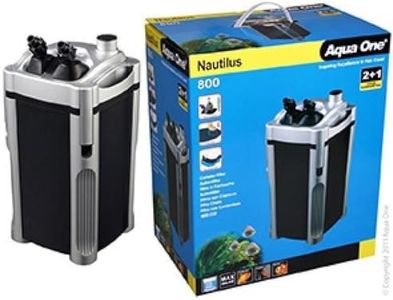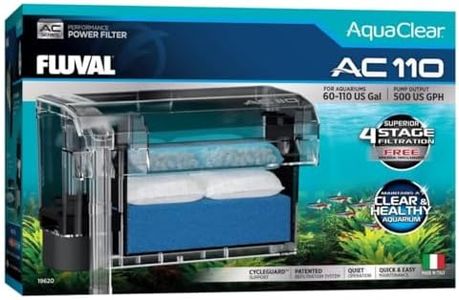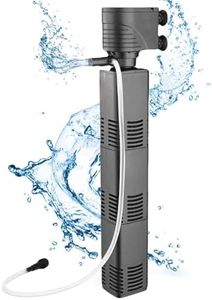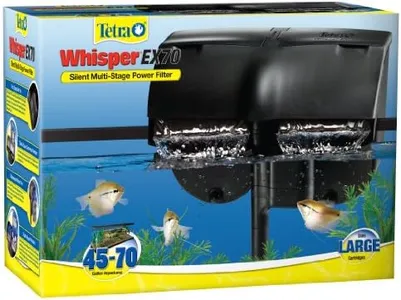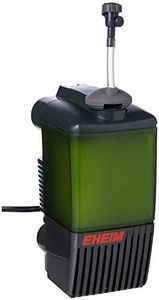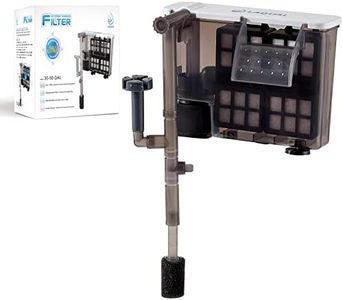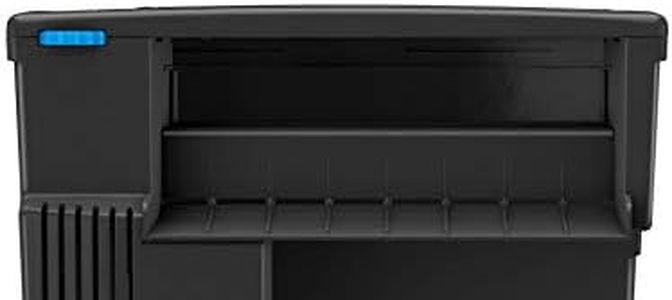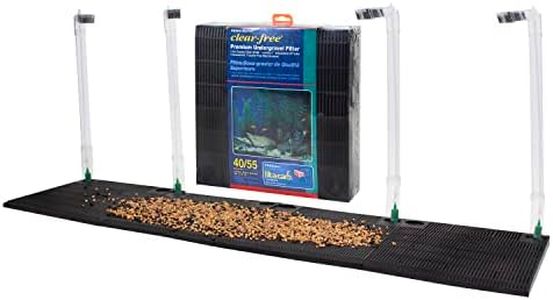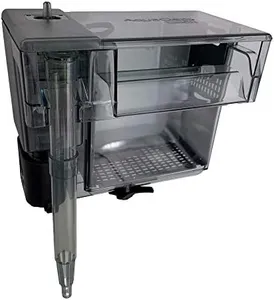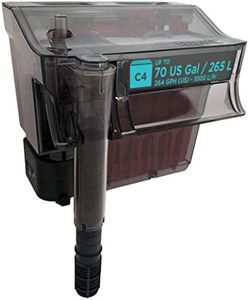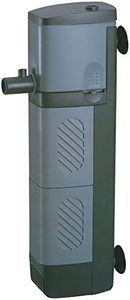We Use CookiesWe use cookies to enhance the security, performance,
functionality and for analytical and promotional activities. By continuing to browse this site you
are agreeing to our privacy policy
10 Best Fish Filter For 50 Gallon Tanks
From leading brands and best sellers available on the web.Buying Guide for the Best Fish Filter For 50 Gallon Tanks
Choosing the right fish filter for a 50-gallon tank is essential for keeping your aquarium clean and your fish healthy. The right filter will help remove waste, toxins, and debris while keeping the water circulating and full of oxygen. Since a 50-gallon tank is a medium-large size, you need a filter that can handle the volume but isn’t so powerful it creates stressful currents for your aquatic life. Understanding the main specs will help you make a confident decision and ensure your tank thrives.Filtration TypeFiltration type refers to how the filter cleans your tank water: mechanical (removing solid waste), biological (supporting beneficial bacteria), and chemical (removing impurities like chlorine or odors). Most good filters combine all three. Mechanical filtration is key for removing visible waste, biological filtration supports the nitrogen cycle (critical for fish health), and chemical filtration removes hazardous substances. For best results, pick a filter that covers all three, unless you have specific needs (like sensitive fish, in which case chemical filtering may be less important).
Flow Rate (GPH)Flow rate is measured in gallons per hour (GPH) and tells you how much water the filter can process in an hour. For a 50-gallon tank, a general rule is to choose a filter with a flow rate that cycles all your water 4-6 times each hour—so, 200-300 GPH. Lower flow rates (under 200 GPH) can be too weak, leading to dirty water, while much higher rates (over 350 GPH) may create strong currents, stressing fish and plants. Think about your fish: species that like calm water (like bettas) will prefer a lower flow; those that enjoy movement (like danios) can handle higher. Tailor your choice to your tank’s inhabitants.
Filter Media CapacityFilter media capacity is about how much and what kind of filtering materials the unit can hold—like sponges, ceramics, or carbon packs. Higher media capacity means the filter can hold more bacteria and strain out more debris, leading to a cleaner tank with less maintenance. If you want easy care and maximum water quality, choose a filter with enough space for various media types. If you don’t keep many fish or don’t mind regular cleaning, a smaller media compartment might be just fine.
Ease of MaintenanceEase of maintenance refers to how simple it is to take apart and clean the filter and change any media inside. A filter that allows you to quickly rinse or swap sponges and cartridges will save time and reduce disruption for your fish. When choosing, look for designs with simple access panels or clear instructions. If you are new to fishkeeping, pick a filter known for user-friendly maintenance; if you enjoy tinkering or have more experience, you might be comfortable with more advanced systems.
Noise LevelNoise level describes how much sound the filter produces while it’s running. Some filters run almost silently, while others can hum or rattle. If the tank is in a bedroom or quiet area, noise might be a critical factor. Check user opinions or noise specs if you’re sensitive to sound. Quiet filters typically use magnetic impellers or special insulation, while louder ones might use older or less sophisticated designs. If the tank is in a noisy room, this might matter less for you.
